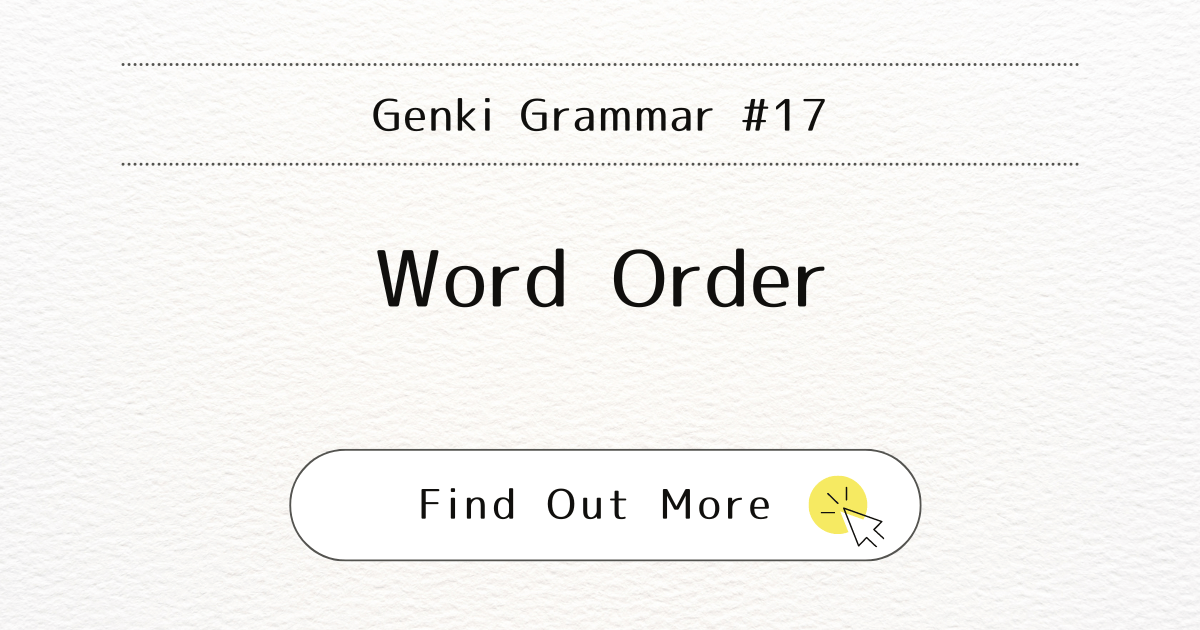
Introduction
Understanding the word order in Japanese sentences is crucial for forming clear and correct sentences. Japanese sentence structure is flexible, but generally, sentences follow a pattern. A sentence typically consists of several noun-particle sequences followed by a verb or an adjective. A noun-particle sequence is a noun paired with a particle that indicates the noun’s role in the sentence, such as the subject, object, or location. Let’s look at some common arrangements.
Examples
A typical Japanese sentence is made up of several noun-particle sequences followed by a verb or an adjective. Here are some examples:
私は今日学校で日本語を勉強します。
(Watashi wa kyou gakkou de nihongo o benkyou shimasu.)
Topic – Time – Place – Object – Verb
I will study Japanese at school today.
私はよく7時ごろ学校へ行きます。
(Watashi wa yoku shichiji goro gakkou e ikimasu.)
Topic – Frequency – Time – Goal – Verb
I often go to school at around seven.
These examples illustrate the typical positions of different elements in a Japanese sentence. However, other arrangements are also possible depending on what you want to emphasize.
Note
The flexibility of Japanese word order allows you to emphasize different parts of the sentence. The most important element, or the one you want to highlight, can be placed earlier in the sentence. For example, if you want to emphasize time in ‘私は今日学校で日本語を勉強します。’ it would be: ‘今日私は学校で日本語を勉強します。'”
Conclusion
Mastering the word order in Japanese will help you communicate more clearly and effectively. Practice forming sentences with different structures to become more comfortable with the flexibility of Japanese grammar.



